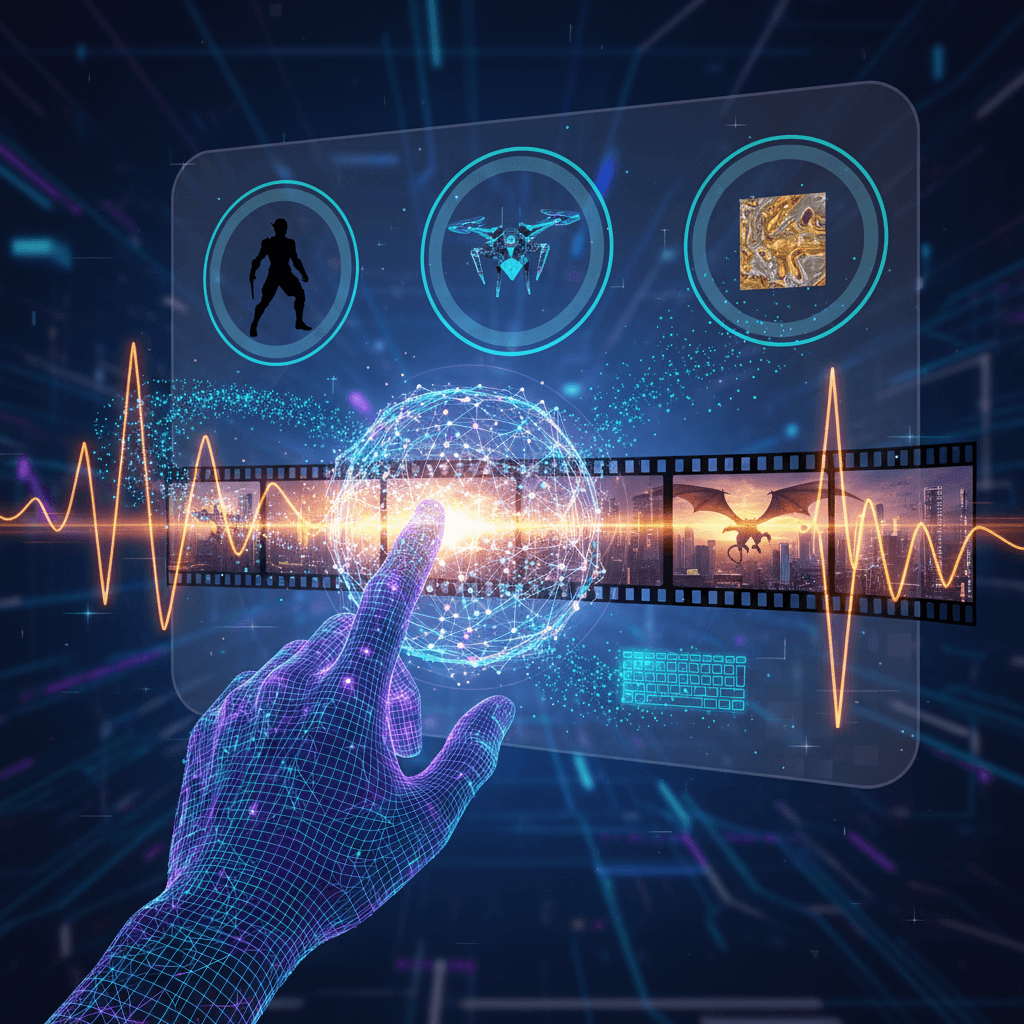Google Gemini AI Revolutionizes Video Control with Multi-Image Prompts
Gemini's Veo 3.1 empowers creators with multi-image guidance for consistent, nuanced AI video, complete with synchronized audio.
November 16, 2025

In a significant step forward for generative artificial intelligence, Google is rolling out a powerful new capability within its Gemini application that grants users an unprecedented level of control over AI-generated video. The system's state-of-the-art video model, Veo 3.1, can now be guided by up to three reference images in conjunction with a single text prompt.[1] This multimodal approach allows creators to produce more nuanced, consistent, and visually specific video clips, addressing one of the key challenges in the rapidly evolving field of AI content creation.[2] The update, which produces eight-second videos complete with natively generated audio, marks a pivotal move in making sophisticated AI tools more accessible and effective for a broad range of users, from casual creatives to professional filmmakers.[3][4]
The core of this advancement lies in what Google refers to as the "ingredients to video" feature.[2][5] By providing reference images of a specific character, object, or style, users can anchor the AI's creative process, ensuring that the final output aligns more closely with their vision.[2] This technique significantly reduces the likelihood of "hallucinations," or outputs that deviate from the user's intent, a common issue when relying solely on text prompts.[6] The Veo 3.1 model, an evolution of previous iterations, demonstrates an improved understanding of cinematic styles and narrative structure, processing the user's text and visual "ingredients" to generate coherent and context-aware scenes.[7][2] The model can produce videos in either 720p or 1080p resolution and supports both 16:9 landscape and 9:16 portrait aspect ratios, catering to different platforms and use cases.[3][4] Furthermore, the integrated audio generation is a key differentiator, as Veo 3.1 can create synchronized sound effects, ambient noise, and even dialogue based on the prompt, adding another layer of realism and reducing post-production workload.[7][8] This suite of features is accessible through the Gemini app for subscribers of the Google One AI Premium plans.[9]
This update positions Google more competitively in the fierce AI video generation market.[10] While OpenAI's Sora has been lauded for its realism and ability to generate longer, coherent shots, and Runway's Gen-3 is noted for its advanced editing tools and camera controls, Google's emphasis on multi-image reference and integrated, high-quality audio offers a distinct advantage in creative control and workflow efficiency.[11][12][13] The ability to maintain character and style consistency across multiple shots by reusing visual "ingredients" is a direct solution to a major hurdle in AI filmmaking.[2][5] The new capabilities are also integrated into Flow, Google's more advanced AI filmmaking tool aimed at professional creatives, which combines the power of Veo, the image generator Imagen, and Gemini's language skills into a more comprehensive storytelling platform.[14][15] While competitors each have their strengths, with some offering faster generation times or more mature APIs, Veo 3.1's focus on fidelity, prompt adherence, and multimodal input makes it a powerful contender, particularly for creators focused on narrative and brand-specific content.[10][12][13]
The implications of increasingly sophisticated and accessible AI video tools like Gemini's Veo 3.1 extend deep into the creative industries.[16] On one hand, this technology represents a significant democratization of creativity, lowering the barrier to entry for high-quality video production.[17] Independent filmmakers, small businesses, and social media content creators can now visualize and produce concepts that would have previously required expensive equipment, large teams, and specialized skills.[18][19] This could lead to a surge in diverse and innovative content.[17] On the other hand, the rapid advancement of AI raises concerns about job displacement for roles in visual effects, animation, and advertising production.[17] The ability to automate parts of the creative process, while increasing efficiency, also fuels debates around intellectual property, the commodification of art, and the potential for a homogenization of styles.[17][20] As these tools become more integrated into professional workflows, the industry will likely see a shift in required skills, with a greater emphasis on creative direction and expert prompt engineering rather than manual execution.[19]
In conclusion, Google's integration of multi-image reference into its Gemini video generation platform is more than just a feature update; it is a strategic move that pushes the boundaries of creative control in the AI era. By allowing users to blend text and multiple images, the Veo 3.1 model offers a more intuitive and precise way to translate vision into motion, complete with synchronized audio. This development not only intensifies the competitive landscape of AI video synthesis but also accelerates the ongoing transformation of the creative industries. While the long-term impact on creative professions remains a subject of intense discussion, the immediate effect is clear: the power to generate complex, consistent, and compelling video content is becoming more accessible than ever before, heralding a new chapter in digital storytelling.
Sources
[1]
[4]
[5]
[6]
[7]
[8]
[9]
[10]
[11]
[12]
[13]
[14]
[15]
[16]
[17]
[18]
[19]